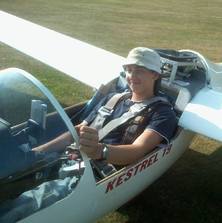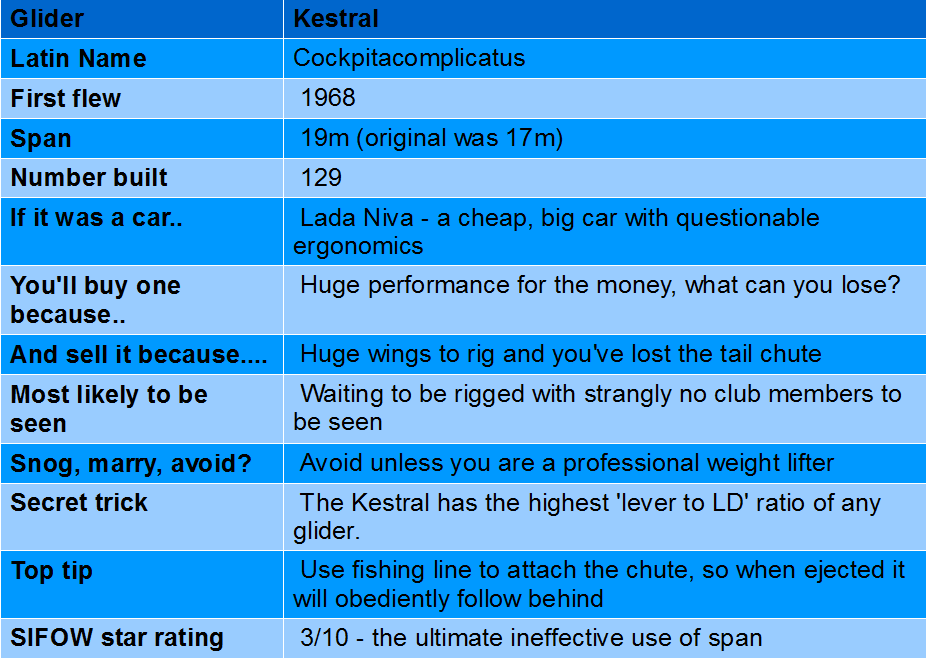Kestrel

A young person who can't find a nice Cirrus.
In 1960 something, Glasflugel (Germany) designed the 17m Kestral. It was a flapped glider that weighed 260kg and delivered a glide angle of 43:1. In 1970-something, the British company Slingsby took this design and added two metres of wing root, weighing an additional SEVENTY kilogrames, to deliver a staggering additional ONE point of glide angle...wow. The flaps are controlled by two levers (why use one?) and even more impressively in terms of design excellence, the additional 'performance' requires the use of tail chute (two more levers in the cockpit) which has a habit of getting lost and becoming stuck up trees. A design and manufacturing triumph and one which will test the strongest of backs.
Top Facts
For more information see the flight review

